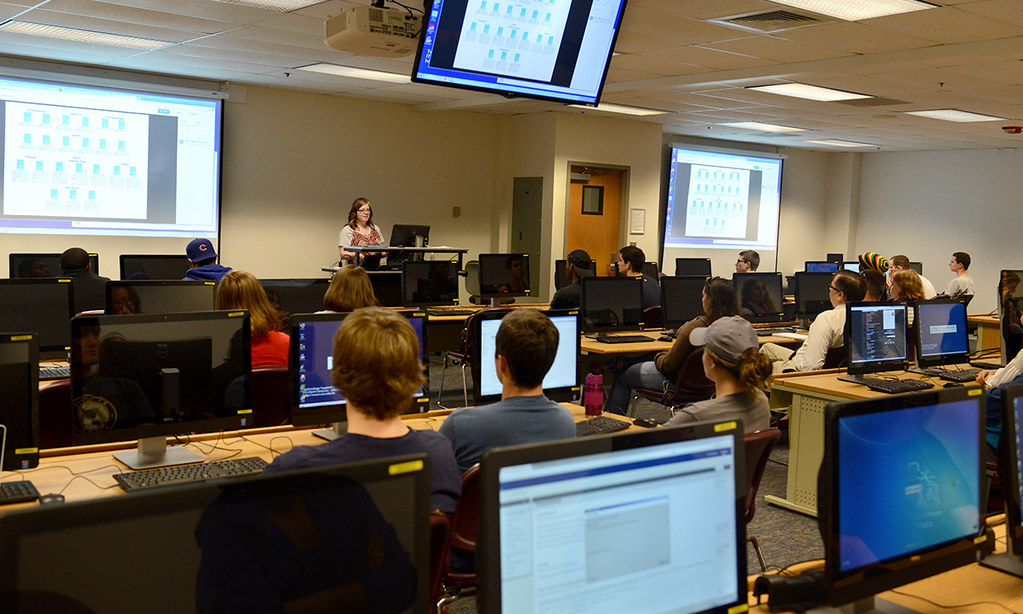Educational technology has become an integral part of modern teaching, offering a plethora of tools and resources to enhance the learning experience. In this blog post, we will explore the diverse landscape of educational technology and provide contemporary teachers with a comprehensive guide to resources that can elevate their teaching methods. From interactive platforms to productivity tools, let’s delve into the world of edtech and its transformative impact on education.
1. Interactive Learning Platforms
a. Learning Management Systems (LMS)
- Overview: LMS platforms like Moodle, Canvas, and Blackboard facilitate the creation of online courses, centralized resource sharing, and student assessment.
- Advantages: Streamline content delivery, provide a centralized hub for resources, and offer tools for tracking student progress.
b. Interactive Whiteboards and Smartboards
- Overview: Interactive whiteboards, such as SMART Boards, enable dynamic and engaging lessons by allowing teachers to write, draw, and interact with digital content.
- Advantages: Enhance classroom interactivity, promote visual learning, and provide opportunities for collaborative activities.
c. Video Conferencing Tools
- Overview: Tools like Zoom and Microsoft Teams facilitate virtual classrooms, enabling real-time interaction between teachers and students.
- Advantages: Extend learning beyond the physical classroom, facilitate remote teaching, and promote communication and collaboration.
d. Gamification Platforms
- Overview: Platforms like Kahoot! and Classcraft incorporate game elements into the learning experience, making education more interactive and engaging.
- Advantages: Increase student motivation, reinforce learning through gamified assessments, and create a fun and participatory classroom environment.
2. Productivity Tools for Teachers
a. Online Assessment Platforms
- Overview: Platforms like Google Forms and Socrative allow teachers to create and administer online assessments, quizzes, and surveys.
- Advantages: Streamline assessment processes, provide instant feedback, and enable data-driven decision-making.
b. Collaboration and Communication Tools
- Overview: Tools like Google Workspace (formerly G Suite) and Microsoft 365 enhance collaboration and communication among teachers and students.
- Advantages: Facilitate real-time collaboration, enable document sharing, and improve communication within and outside the classroom.
c. Task Management Apps
- Overview: Apps like Trello and Asana assist teachers in organizing tasks, managing assignments, and maintaining a structured workflow.
- Advantages: Enhance efficiency, reduce administrative workload, and help teachers stay organized.
d. Gradebook Software
- Overview: Gradebook tools like PowerSchool and Engrade assist teachers in efficiently managing and tracking student grades.
- Advantages: Simplify grade management, automate calculations, and provide a centralized platform for monitoring student progress.
3. Innovative Teaching Methods
a. Augmented Reality (AR) and Virtual Reality (VR)
- Overview: AR and VR technologies, like Google Expeditions and Oculus, bring immersive experiences to the classroom, enhancing learning in various subjects.
- Advantages: Foster experiential learning, engage students in virtual field trips, and provide a unique perspective on complex concepts.
b. Flipped Classroom Platforms
- Overview: Platforms like Flipgrid and Edpuzzle support the flipped classroom model by enabling teachers to create and share video content for students to engage with outside of class.
- Advantages: Enhance student engagement, encourage self-paced learning, and allow for more interactive in-class activities.
c. Adaptive Learning Systems
- Overview: Adaptive learning platforms, such as Khan Academy and DreamBox, personalize learning experiences by adjusting content based on individual student progress.
- Advantages: Cater to individual learning needs, provide targeted feedback, and support differentiated instruction.
d. Online Collaborative Tools
- Overview: Collaborative tools like Padlet and Google Jamboard allow students to work together on projects, share ideas, and contribute to shared digital spaces.
- Advantages: Encourage teamwork, facilitate brainstorming, and enable collaborative learning in virtual and physical classrooms.
4. Professional Development Resources for Teachers
a. Online Courses and Webinars
- Overview: Platforms like Coursera and edX offer online courses and webinars for teachers to enhance their skills and stay updated on educational trends.
- Advantages: Provide accessible professional development opportunities, cover a variety of subjects, and allow for self-paced learning.
b. Educational Blogs and Podcasts
- Overview: Blogs like Edutopia and podcasts like The EdSurge Podcast offer valuable insights, best practices, and discussions on educational topics.
- Advantages: Keep teachers informed, inspire creativity, and offer a platform for continuous learning.
c. Educator Communities and Social Media
- Overview: Platforms like Twitter, LinkedIn, and education-focused forums create spaces for teachers to connect, share ideas, and seek advice.
- Advantages: Facilitate networking, provide a supportive community, and offer a platform for collaborative learning.
d. Digital Libraries and Resource Repositories
- Overview: Digital libraries, such as the Library of Congress and TeachersPayTeachers, offer a wealth of educational resources for teachers.
- Advantages: Provide access to a vast repository of lesson plans, worksheets, and teaching materials, saving time and promoting resource sharing.
5. Overcoming Challenges in Educational Technology Adoption
a. Professional Development Opportunities
- Challenge: Teachers may face challenges in accessing professional development opportunities to enhance their technological skills.
- Solution: Educational institutions should invest in comprehensive professional development programs to empower teachers with the necessary skills for effective technology integration.
b. Digital Literacy
- Challenge: Some teachers may struggle with digital literacy, hindering their ability to navigate and utilize educational technology effectively.
- Solution: Incorporate digital literacy training into professional development programs, ensuring that teachers are proficient in using edtech tools.
c. Infrastructure and Access
- Challenge: Unequal access to technology and inadequate infrastructure can limit the implementation of educational technology in certain schools.
- Solution: Advocate for improved technology infrastructure in schools and work towards closing the digital divide through initiatives and partnerships.
6. Success Stories and Testimonials
a. Improved Student Engagement
- Success: Share stories of teachers who have witnessed significant improvements in student engagement and learning outcomes through the effective use of educational technology.
b. Enhanced Learning Experiences
- Success: Highlight testimonials from students who have experienced enriched learning experiences and increased motivation due to the incorporation of technology in the classroom.
Conclusion
In conclusion, educational technology offers a vast array of resources that can revolutionize contemporary teaching methods. From interactive learning platforms to productivity tools and innovative teaching methods, the possibilities are limitless. By embracing these tools, teachers can create dynamic and engaging learning environments that prepare students for success in the digital age.

